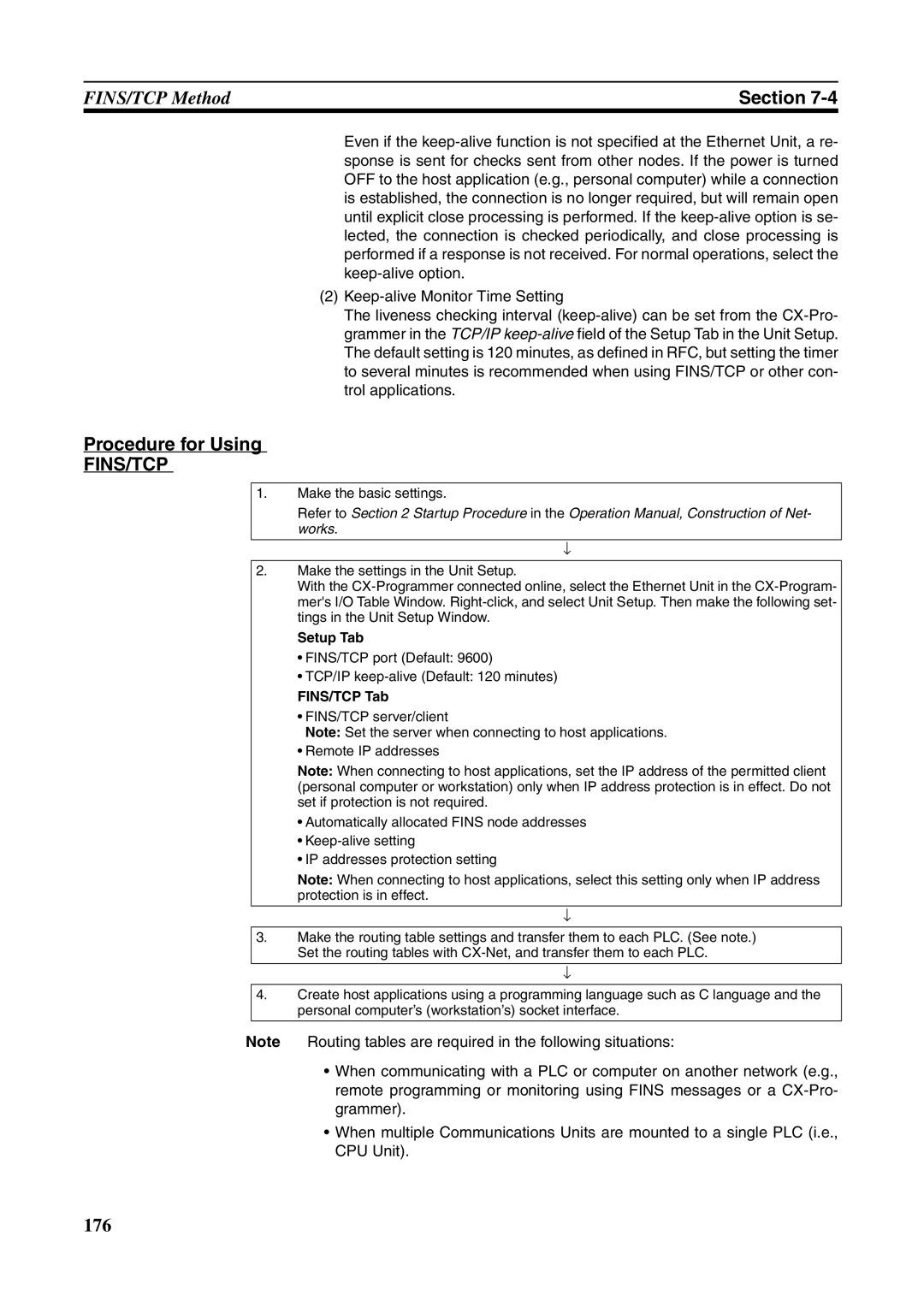
FINS/TCP Method | Section |
Even if the
(2)
The liveness checking interval
Procedure for Using
FINS/TCP
1.Make the basic settings.
Refer to Section 2 Startup Procedure in the Operation Manual, Construction of Net- works.
↓
2.Make the settings in the Unit Setup.
With the
Setup Tab
•FINS/TCP port (Default: 9600)
•TCP/IP
FINS/TCP Tab
•FINS/TCP server/client
Note: Set the server when connecting to host applications.
•Remote IP addresses
Note: When connecting to host applications, set the IP address of the permitted client (personal computer or workstation) only when IP address protection is in effect. Do not set if protection is not required.
•Automatically allocated FINS node addresses
•
•IP addresses protection setting
Note: When connecting to host applications, select this setting only when IP address protection is in effect.
↓
3.Make the routing table settings and transfer them to each PLC. (See note.) Set the routing tables with
↓
4.Create host applications using a programming language such as C language and the personal computer’s (workstation’s) socket interface.
Note Routing tables are required in the following situations:
•When communicating with a PLC or computer on another network (e.g., remote programming or monitoring using FINS messages or a
•When multiple Communications Units are mounted to a single PLC (i.e., CPU Unit).
176
